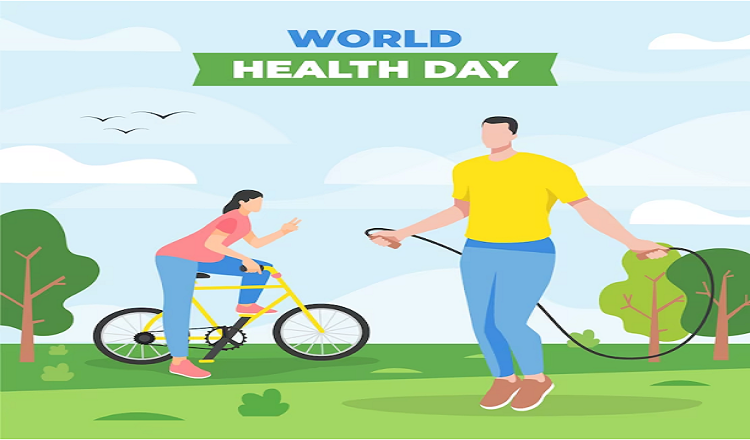You may be surprised to learn that your environment can have a big impact on your health. That’s correct, your general well-being may be influenced by the air you breathe, the water you drink, the climate where you live, and even the built environment around you. It is understandable why environmental health has grown in popularity in recent years.
So, exactly what do we mean when we say “environment”? In this case, we’re referring to the environmental elements—physical, chemical, and biological—that may have an impact on our health. Everything from the air we breathe to the environments in which we work and live are included in this. Furthermore, even while some of these circumstances may be outside of our control, there are frequently activities we can do to lessen their negative effects on our health.
Why, then, should we be concerned with environmental health? Well, to start with, unfavourable environmental circumstances can cause a variety of health difficulties, from cancer to lung problems. These issues are only anticipated to worsen as our planet’s pollution level rises and the climate changes. Understanding how your environment impacts your health and what you can do to protect yourself is crucial for this reason. In this post, we’ll look at some of the most significant ways that your surroundings can affect your health and offer advice on how to stay healthy in a rapidly changing environment.
Air Purity
In the USA, air pollution is a significant environmental health hazard that could have negative effects on human health. Numerous health problems, including as cancer, cardiovascular and respiratory disorders, as well as early death, can be brought on by exposure to poor air quality. This is especially true for vulnerable groups like children, the elderly, and people who already have health issues.
What precisely are the causes of air pollution then? Particulate matter, ozone, nitrogen dioxide, and sulphur dioxide are a few of the most prevalent air contaminants. These pollutants can originate from many different places, such as industrial plants, car emissions, and even unmanaged natural phenomena like wildfires and dust storms.
Millions of people are exposed to harmful amounts of air pollution annually, according to alarming statistics on air pollution in the USA. Nearly 141 million Americans, according to the American Lung Association, reside in counties with unhealthful levels of particle or ozone pollution. Asthma attacks, heart attacks, and even early death might result from this, among other health issues.
Fortunately, steps may be made to enhance air quality and safeguard public health. The use of clean energy sources must be encouraged, industrial facility and transportation emissions must be decreased, and public knowledge of the consequences of air pollution must be raised. We can contribute to preserving the health and well-being of present and future generations by taking steps to enhance air quality.
Stream Quality
Inadequate water quality can have major negative effects on human health, yet access to clean, safe water is necessary for good health. Numerous ailments, including gastrointestinal infections, skin conditions, and even brain damage, can result from exposure to contaminated water. This is especially true for populations who are more susceptible, like children and people with compromised immune systems.
Consequently, what causes water pollution? Bacteria, viruses, and chemical contaminants such as lead and pesticides are a few examples of frequent water pollutants. These contaminants can originate from a number of places, such as industrial waste discharge, agricultural runoff, and insufficient wastewater treatment.
Millions of Americans are exposed to contaminated drinking water each year, according to alarming statistics on water contamination in the USA. Nearly 44 million Americans receive their drinking water from systems that are in violation of the Safe Drinking Water Act, according to the Environmental Protection Agency. Serious health effects like cancer, reproductive issues, and developmental disabilities could result from this.
Reduce runoff from agricultural and urban areas, invest in infrastructure for water treatment and distribution, and raise public understanding of the value of clean water as ways to improve water quality and safeguard human health. We can ensure that everyone has access to clean and healthy water by taking steps to improve the quality of the water.
Changing Climate
Human health is being significantly impacted by the urgent environmental issue of climate change. Climate change can have an impact on health in a number of ways, including rising temperatures, altered precipitation patterns, and an increase in the frequency of extreme weather events. A variety of health effects, such as an elevated risk of infectious diseases, respiratory issues, and illnesses related to the heat, might result from these alterations.
The consequences of climate change on health are already being seen in the USA, where cases of heat stroke and respiratory disorders are on the rise, and infections like Lyme disease and West Nile virus are spreading. According to the American Public Health Association, between 2030 and 2050, climate change could add an additional 250,000 fatalities annually worldwide.
Reducing greenhouse gas emissions, enhancing public health infrastructure to better address the health impacts of climate change, and promoting public awareness and education about the connections between climate change and health are just a few steps that can be taken to mitigate and adapt to the impacts of climate change on health. We can contribute to preserving the health and well-being of present and future generations by addressing climate change.
Noisy Environment
In the USA, noise pollution is a developing environmental health hazard that has the potential to seriously harm human health. Numerous health problems, including hearing loss, sleep disorders, and cardiovascular disease, can be brought on by prolonged exposure to loud noise. This is especially true for vulnerable groups like children, the elderly, and people who already have health issues.
Transportation noise from automobiles and aircraft, industrial noise from factories and construction sites, and even recreational noise from concerts and athletic events can all be sources of noise pollution.
Millions of individuals in the USA are exposed to unhealthy amounts of noise each year, according to alarming statistics on noise pollution. Nearly 100 million Americans are exposed to traffic noise levels that surpass 55 decibels, which may have harmful impacts on their health, according to the Environmental Protection Agency.
There are steps that can be taken to mitigate noise pollution and safeguard public health, including installing noise barriers alongside highways, enforcing noise ordinances in commercial and industrial zones, and raising public knowledge of the negative effects of noise pollution on health. We can contribute to ensuring a healthier and more tranquil environment for everyone by taking steps to prevent noise pollution.
Environment Built
Our physical and emotional health are significantly shaped by the built environment. Our levels of physical activity, exposure to environmental risks, and social connections can all be significantly impacted by the design of our neighbourhoods, buildings, and public places.
The accessibility of healthy food alternatives in neighbourhoods, the design of buildings and streets for pedestrian and bicycle safety, and the presence of green areas for exercise and stress relief are a few examples of how the built environment can affect health.
According to statistics, the built environment can have a significant impact on health in the United States, with lower levels of physical activity occurring in communities with less access to parks and recreational facilities and higher rates of obesity and related diseases in those with better access to healthy food options.
A number of actions can be taken to enhance the built environment for health, including encouraging mixed-use construction to encourage biking and walking, incorporating green infrastructure for stormwater management and better air quality, and putting in place laws to guarantee access to healthy food options in all neighbourhoods. We can contribute to the creation of healthier, more egalitarian communities by making health a top priority in the design of our built environment.
Grassy Areas
Parks, forests, and gardens are examples of green places that can significantly improve human health and wellbeing. According to research, being around greenery can lower stress, enhance mental health, and encourage physical activity.
The provision of outdoor recreation possibilities, the construction of natural places for stress relief and relaxation, and the improvement of air quality by absorbing pollutants and releasing oxygen are a few examples of how green spaces can promote health.
According to statistics, having access to green areas is linked to a number of health advantages, such as lower rates of obesity, depression, and cardiovascular disease. Unfortunately, not all communities have equal access to parks and other green areas, with minority and lower-income populations frequently having less access.
Measures can be done to improve access to existing green spaces, create new parks and green spaces, and encourage the use of green infrastructure in urban areas in order to boost access to green spaces and promote health. Putting green areas first in our neighbourhoods can benefit everyone’s health and wellbeing.
Conclusion
It is undeniable that our surroundings significantly affects our health and happiness. A variety of environmental elements, including air and water quality, climate change, noise pollution, and the built environment, can have an impact on our physical and mental health.
We now know that living in areas with little access to green space, being exposed to noise pollution, and poor air and water quality can all be harmful to our health. On the other hand, actions to raise access to green spaces and improve environmental quality can significantly benefit our health and wellbeing.
To enhance health outcomes and foster fairness in our communities, we must address these environmental issues. This entails putting policies and practises in place to lessen pollution, expand access to green spaces, and create our built environment in a way that promotes health.
Individually, we can take action by consciously choosing to lessen our environmental impact and aid initiatives that encourage environmental health. Together, we can build communities that are healthier and more sustainable for both current and future generations.
Read More May You Like:











